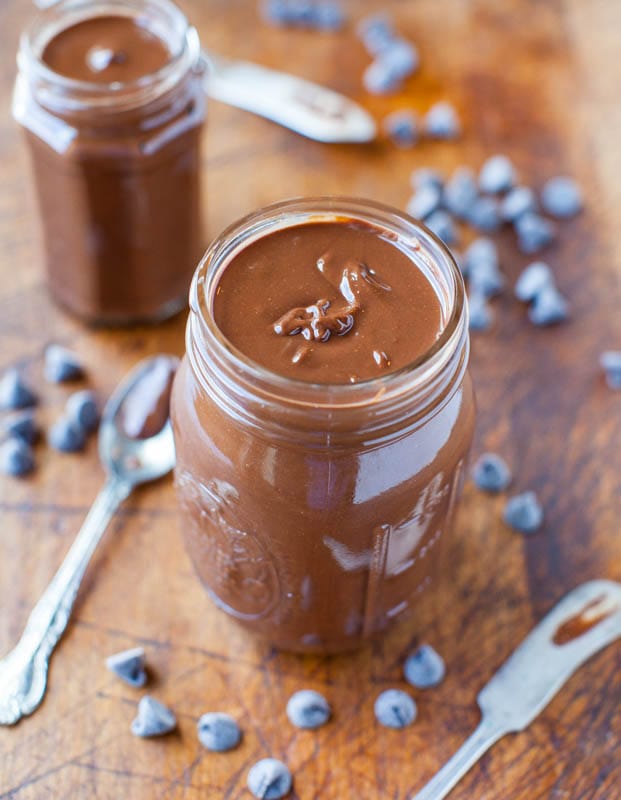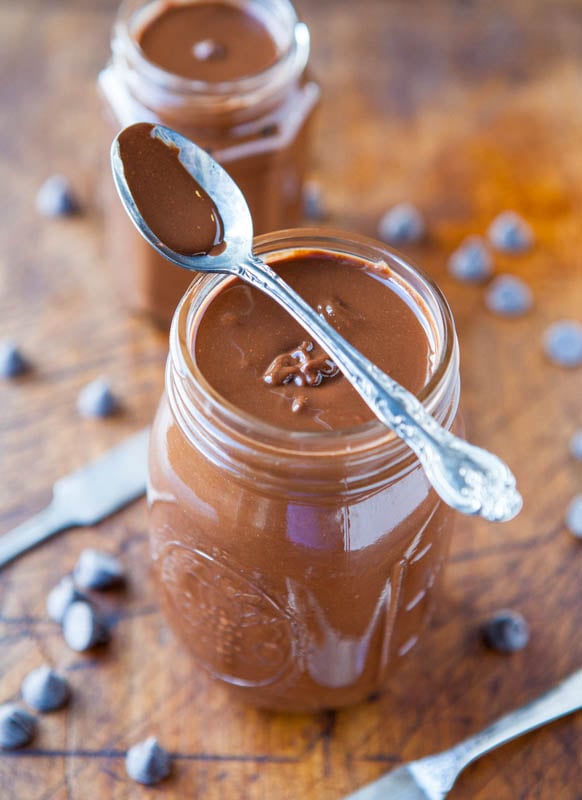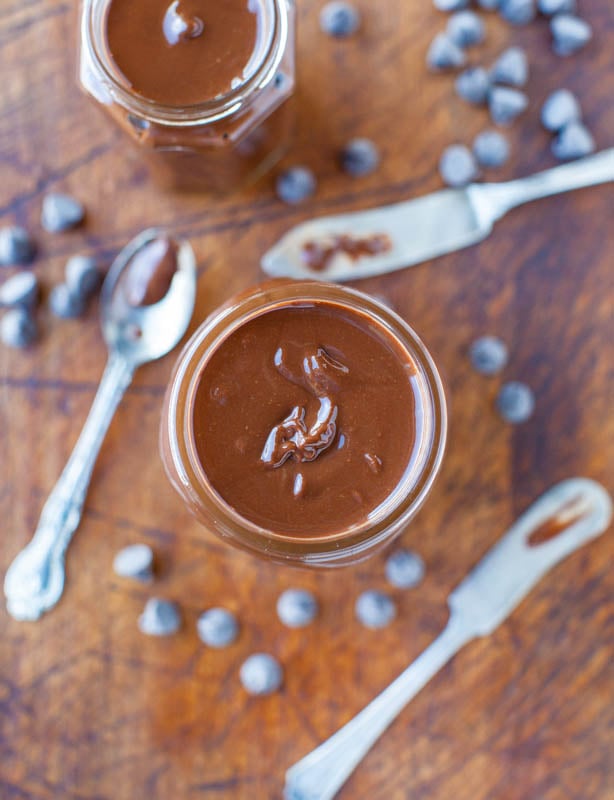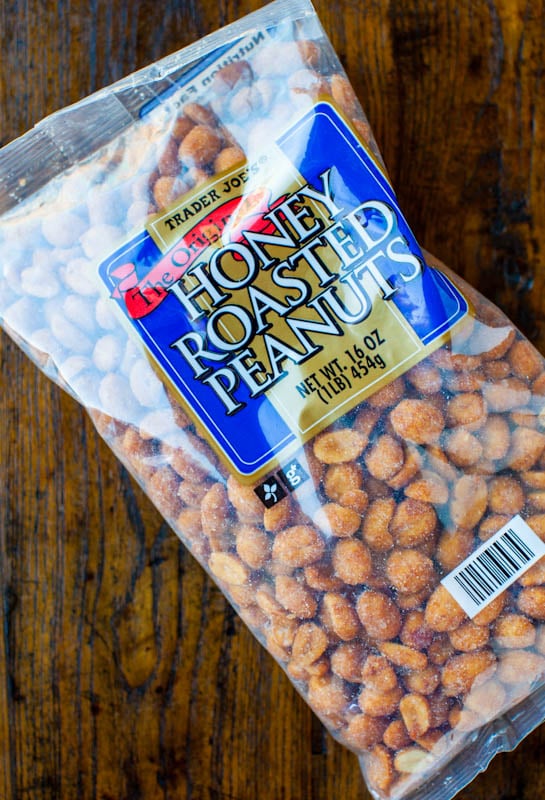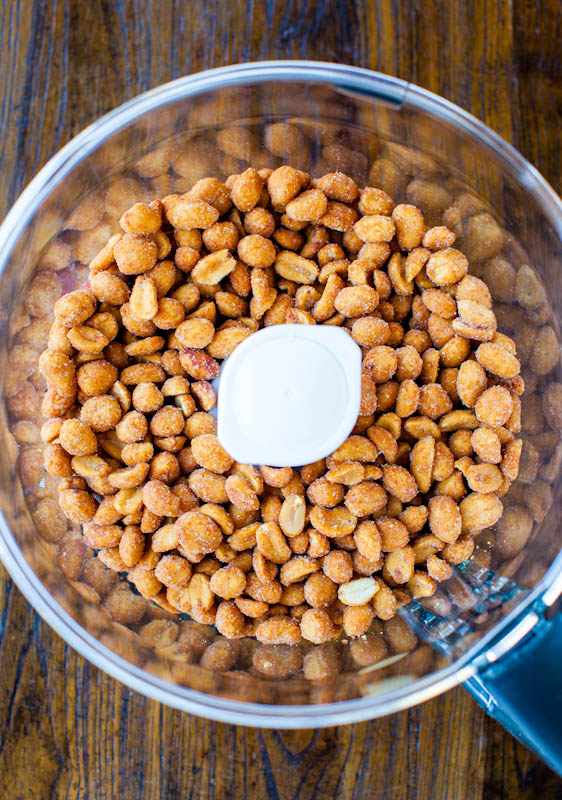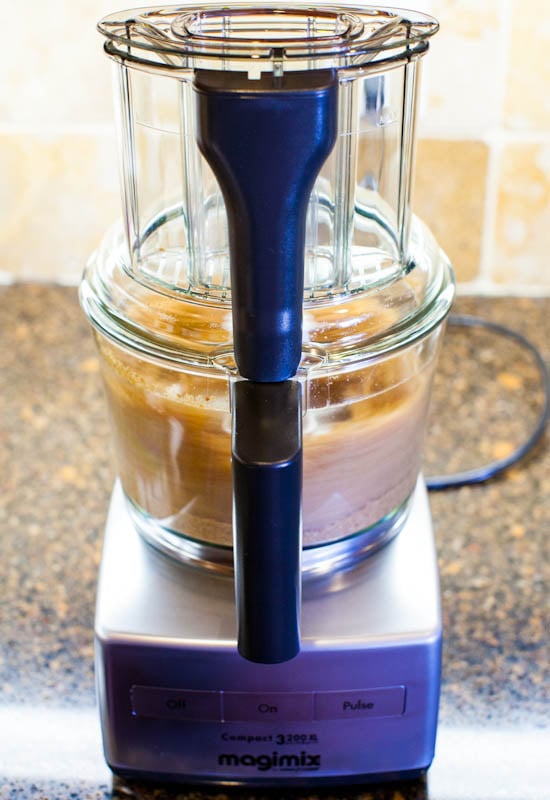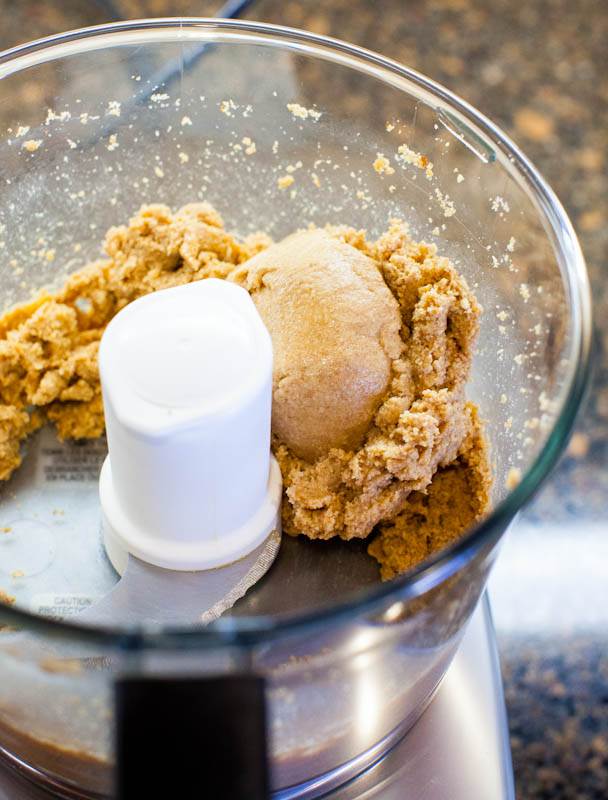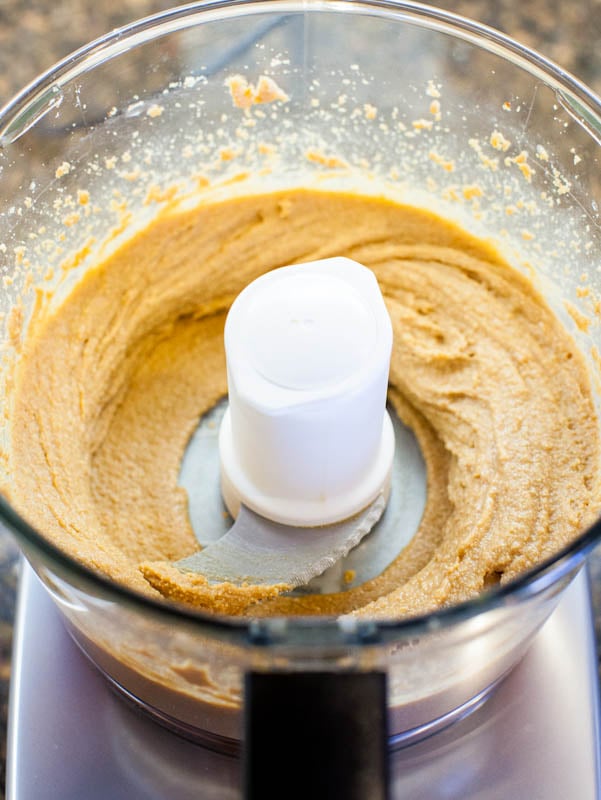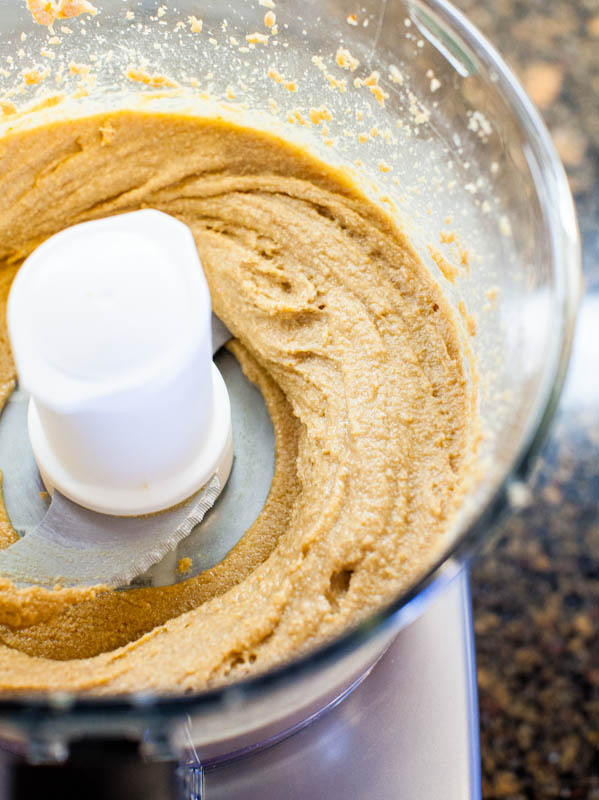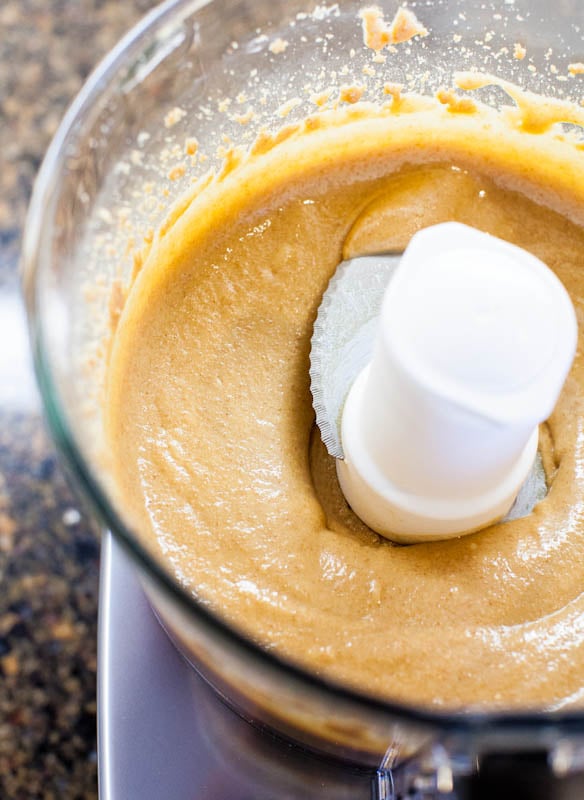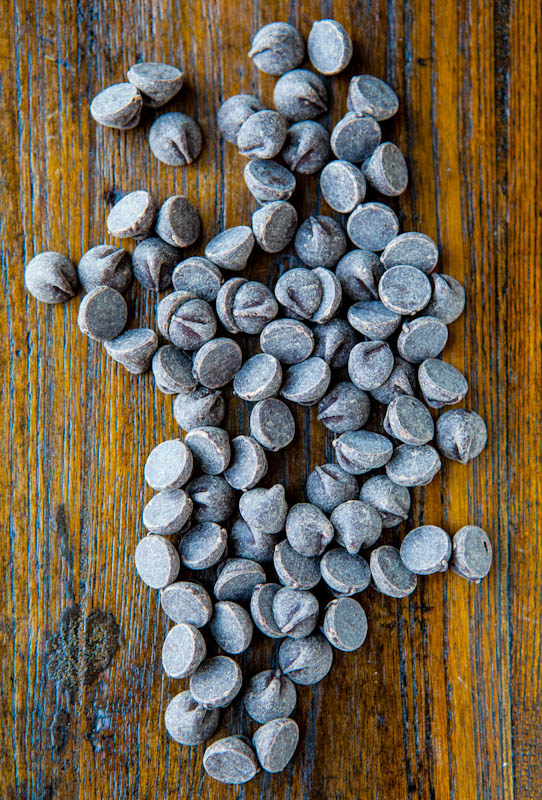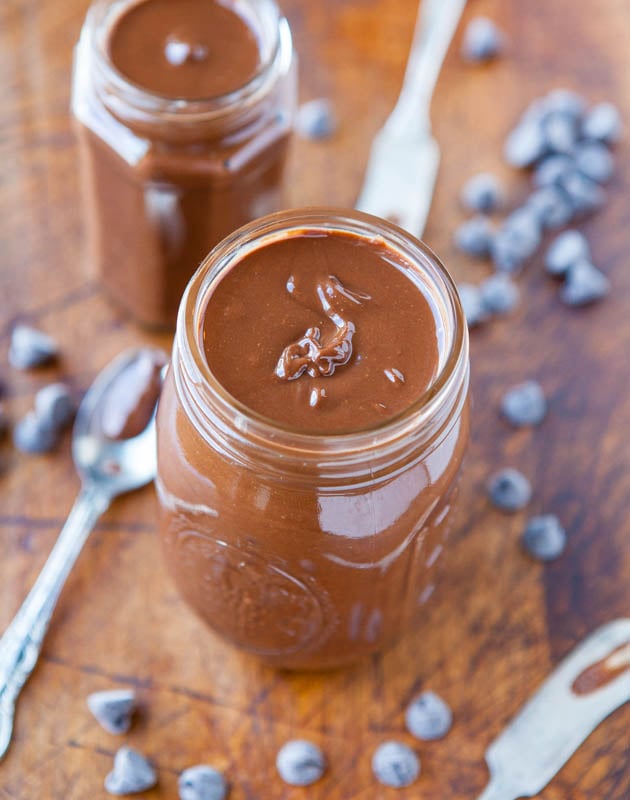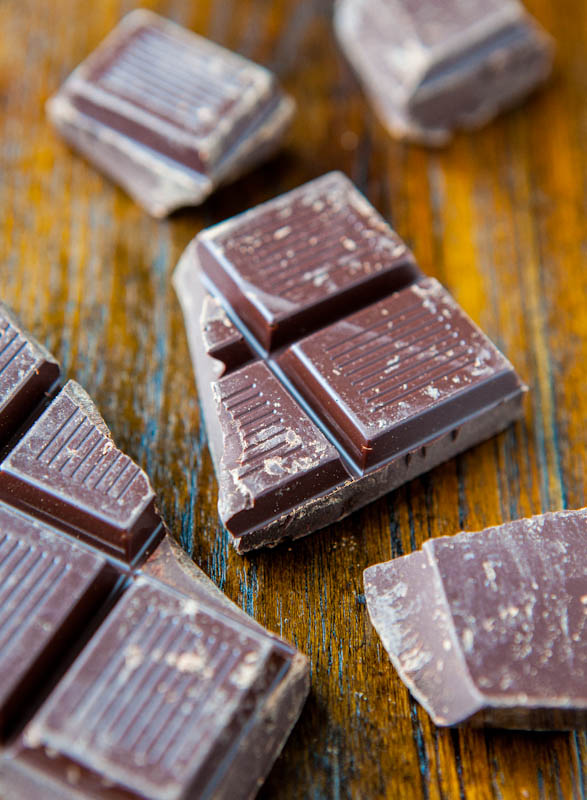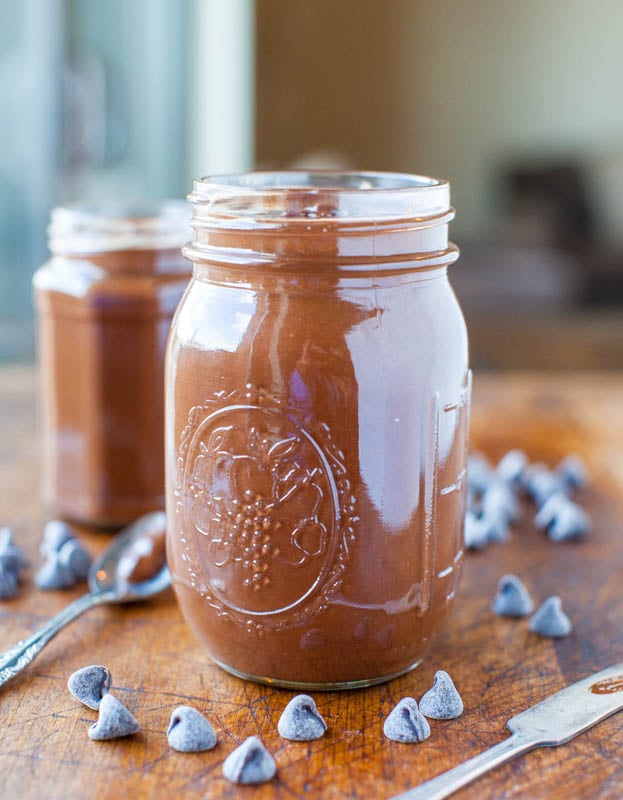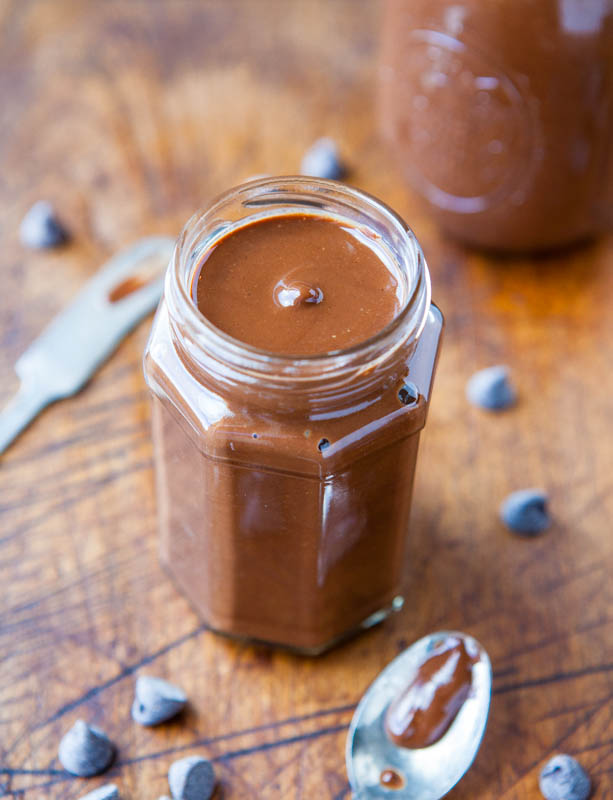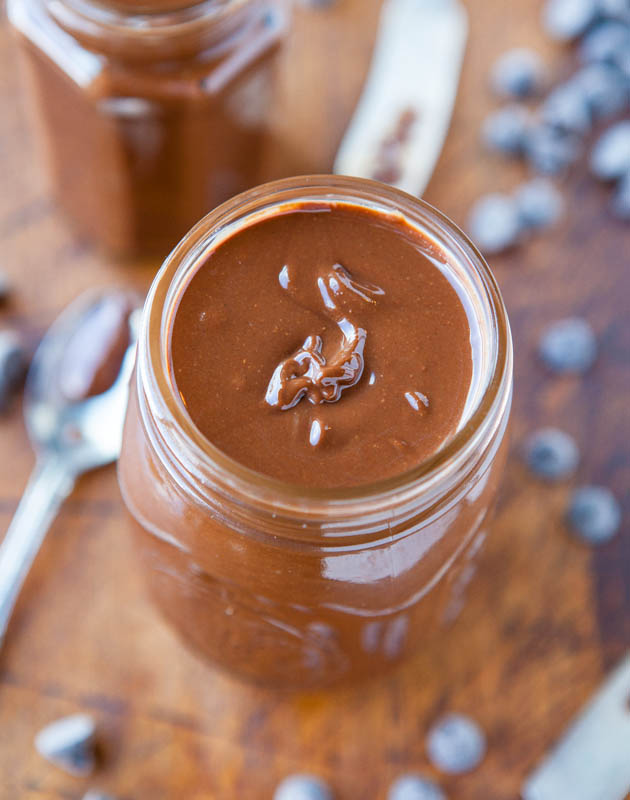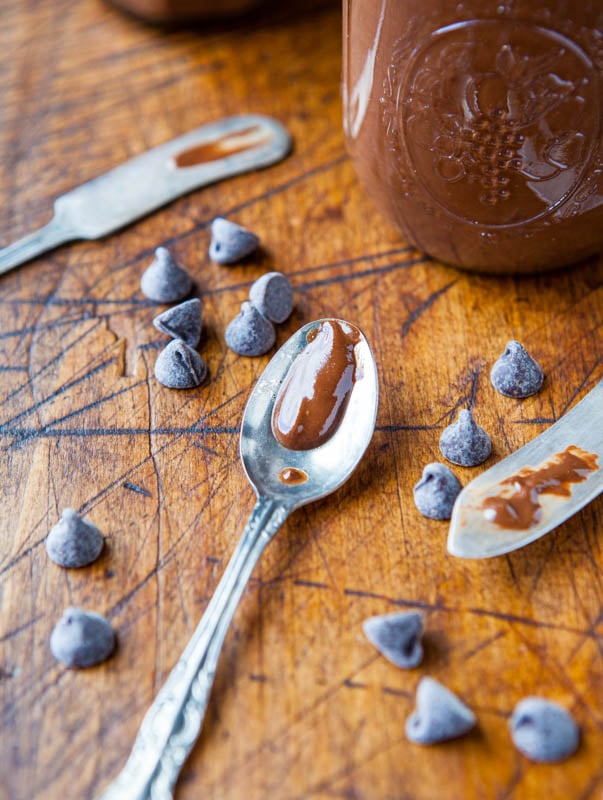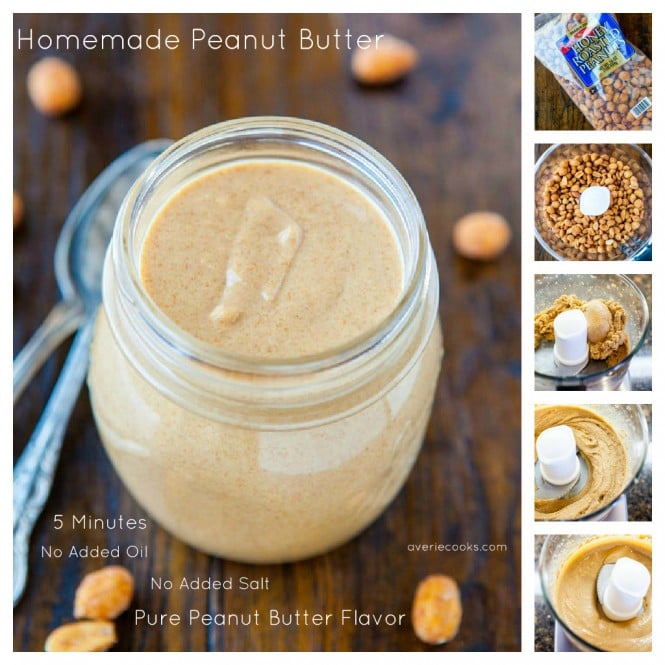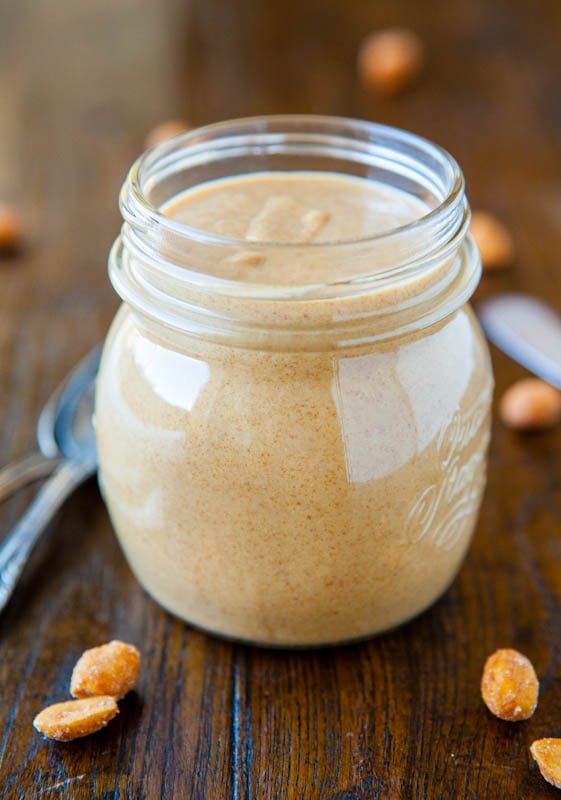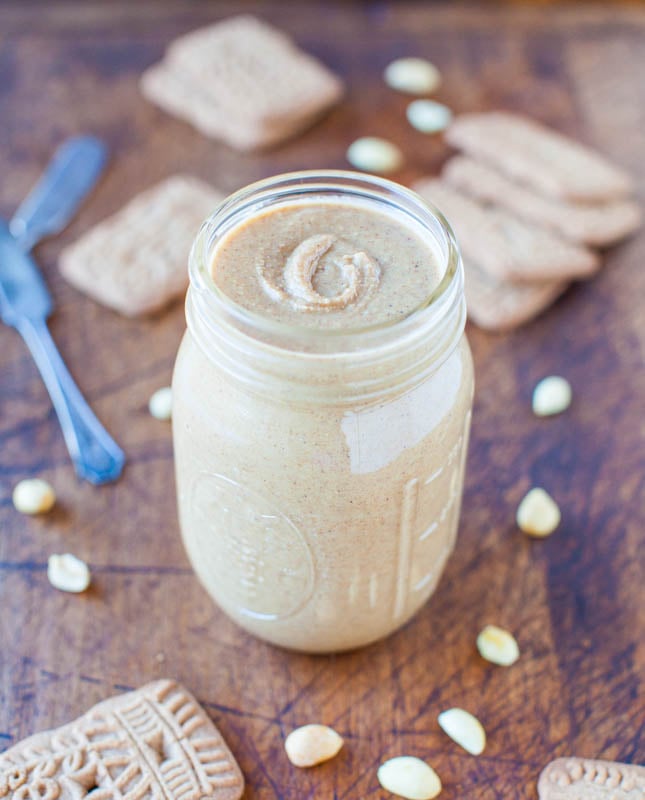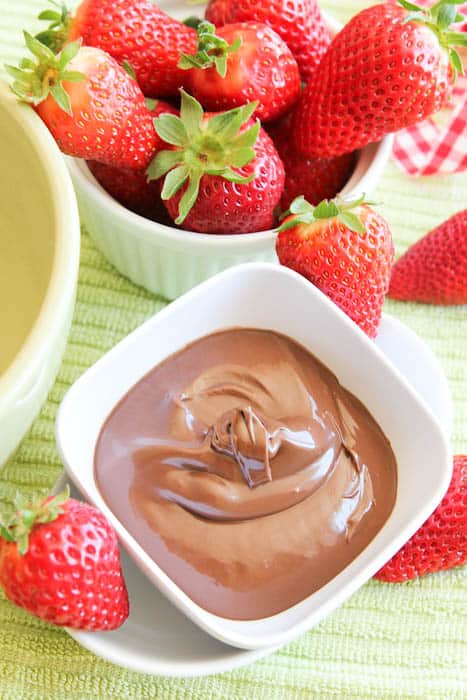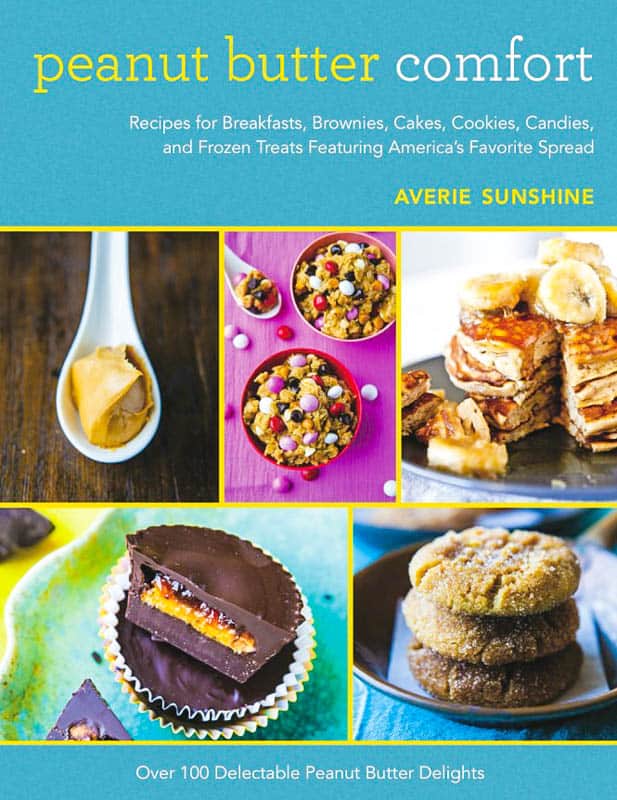Chocolate and peanut butter. One of the best flavor pairings on earth. And you can make your own chocolate peanut butter at home in less than 10 minutes. If you were ever having a bad day, PMSing, your boss was being horrid again, your hair stylist didn’t listen, you dropped your only house key down the elevator shaft, your child volunteered you to be a driver but didn’t clue you into this fact, or life has thrown you some curveballs, try a spoonful of this. Or ten. Problems solved. Homemade Peanut Butter, including chocolate peanut butter, is like no other, and once you try it, for straight up eating (not for baking with) you’ll never want storebought again. Homemade and storebought taste vastly different, and you really can’t imagine quite how different until you try homemade. After one taste, it’ll all make sense. Not to mention, making your own is infinitely cheaper than those pricey gourmet jars you see for $11.99 and up, for a small little jar that’s gone in no time and not even as tasty as homemade.
Recently I made Homemade Cookie Butter Peanut Butter and it’s wonderful. Full of pulverized gingersnaps, a hearty dose of cinnamon, white chocolate, which come together creating a warm, rich spread. I made four batches of the stuff in two weeks right after I cracked the homemade code. Good as it is, it’s not chocolate. Some days, I just have to have chocolate.
The peanut butter comes together in less than 10 minutes in a food processor and is basically work-free. Grab your ear plugs and get ready to blend your way into a much better mood. If chocolate and peanut butter doesn’t set you straight, nothing will. I’ve made this with both lightly-salted roasted peanuts and honey roasted peanuts. Using honey roasted creates a spread that’s slightly sweeter than lightly salted peanuts, but either is fine. Unnroasted or unsalted peanuts are far too bland for my taste and I don’t recommend them. And I’ve had readers write in the past who’ve tried to make peanut butter with raw peanuts and it didn’t go so well.
You could substitute cashews in place of peanuts and because they’re a soft nut, they blend into butter in no time. I’ve done it accidentally when I’m making Raw Vegan Chocolate Chip Cookie Dough Balls and on purpose in Chocolate Coconut Cashew Butter. I’m not a big almond butter fan although you can substitute almonds in place of peanuts. However, almonds are a much firmer nut and will take longer to break down. If you have an older food processor, I would work in small batches and be prepared to lose some hearing after all that blending time elapses. Like making Homemade Peanut Butter, much of the process is the same for Chocolate Peanut Butter. Begin by adding just the peanuts and nothing else at all to the canister of food processor. No oil, no liquid; just peanuts.
Turn it on and the first initial seconds are incredibly loud as the peanuts rattle against the plastic, but it softens after just a few seconds. I always tell my family members before I make nut butter so no one jumps out of their chair with that loud blast coming out of no where before I power the machine on.
There peanuts go through various stages in the approximately five minutes it takes to go from peanuts to peanut butter: crushed peanuts crushed into a fine powder a paste a thicker paste and a big peanut butter “dough ball” forms
Then the big ball magically breaks down. It starts out gritty and thick but in just another minute it smooths out and liquifies.
As you keep processing, the peanut butter becomes smoother, creamier, and thins out. Keep processing until the peanut butter is very smooth and liquidy, another minute or two.
I like my peanut butter buttery smooth and allow it process for a couple minutes after it’s liquified until I’m certain that’s it’s velvety smooth. I’ve never experienced any issues with over-processing and it may seem almost too liquidy and runny but this is normal. Because it’s natural peanut butter and hasn’t been treated with hydrogenated oils like storebought, it’s going to be runnier than Jif or Skippy. It firms up at room temperature and solidifies much more in the refrigerator. As a bonus, it doesn’t separate into a layer of oil and a solid dry mass, which is something I dislike about many storebought ‘natural’ peanut butters.
After the peanut butter is runny and smooth, add the semi-sweet chocolate chips, along with the vanilla and optional salt. I don’t add salt because I find the peanuts to be salty enough, but salt to taste. I have a ferociously strong food processor and add the chips at once through the feed tube with the machine running. If your machine is older or not as strong, sprinkling the chips in slowly may prevent it from struggling. I do not melt the chips first or do anything other than simply add them whole. The power of the machine, coupled with the heat the peanut butter has taken on after 5 minutes of blending, is enough to incorporate them. Process until the chips are incorporated and the spread is smooth, another minute or two.
You may wish to start with 1 cup of chocolate chips and work up from there. I use 2 cups, one standard 12-ounce bag, and the peanut butter is robustly chocolate-flavored. If you prefer peanut butter with more of a hint of chocolate and less chocolate-in-your-face quality, use fewer chocolate chips. I like in-my-face. Based on the chocolate used, the peanut butter really isn’t so much sweet as it is bold and chocolaty. I use semi-sweet chips and would never use milk chocolate chips, simply based on personal taste preference, but I could envision it getting a bit (too) sweet if milk chocolate was used.
Feel free to substitute with darker chocolate, such as 72% bittersweet chocolate. I’m a big fan of the Trader Joe’s 72% Pound Plus bars or use your favorite chocolate. The darker the chocolate, the less sweet the spread will be, and not likely something most kids would go for, meaning it’s mom’s lucky day. Happy chocolate peanut butter hoarding.
Transfer the spread into a glass jar or other container with a lid. I’ve kept it in glass mason jars, large plastic yogurt containers, and old butter containers. The batch will fill a 16-ounce jar (one pint) to the brim, plus about one-half cup, as shown in the large and small jars in the photos.
I store my spread either in the refrigerator or at room temperature. At room temperature it firms up some, but stays soft. It never becomes as thick as Jif or Skippy at room temperature and is on par with Nutella. In the refrigerator, because of the chocolate, it solidifies but softens up again after ten minutes at room temperature. I estimate that it could be stored at room temperature for at least two weeks without issue, but with anything, let common sense be your guide. In the refrigerator, it keeps for months. The shelf life at either room temp or in the fridge will likely far exceed your willpower, rendering long-term storage issues moot.
For all the chocolate and peanut butter fiends, and you know who you are, this is for you. The richness, boldness, smoothness, and utter soul-soothing nature of this stuff will make your world go round. It sure makes mine go round. It’s great on toast, bagels, crackers, dolloped on top of hot oatmeal, used instead of syrup on pancakes and waffles, and makes for great peanut butter and jelly sandwiches, no jelly required.
But all I need is a spoon for maximum enjoyment.
Related Recipes:
35 Favorite Peanut Butter Recipes Tried this recipe? Leave a review! Consider leaving a 5 star rating if you’ve made and loved one of my recipes! 20 Cookie Butter Recipes Chocolate Recipes Peanut Butter Brand Comparison Homemade Peanut Butter – This is the spread that started it all. It’s one of the most pinned and most popular recipes on my site. The taste of fresh homemade peanut butter is like nothing else and there’s no comparison to storebought. Even the grind-your-own options at natural-food grocery stores are nothing like making it at home
Five minutes, a bag of nuts, a food processor, and voila
Homemade Cookie Butter Peanut Butter – A homemade spin on Cookie Butter or Biscoff Spread, made by blending peanuts with gingersnap cookies and cinnamon, which gives the spread a slightly gritty texture, similar to storebought
Chocolate Coconut Cashew Butter (vegan, GF) – A cross between coconut butter, cashew butter, and Nutella, this is so creamy, rich, and decadent
I wrote a cookbook about peanut butter, 100 recipes that all contain peanut butter – My Cookbook: Peanut Butter Comfort Included are 25+ recipes for homemade peanut butter variations
Thanks to everyone who’s told me you’ve preordeded the book! Have you ever made your own nut butter, spreads, or condiments of any kind? Fan of the chocolate + peanut butter flavor combo? Feel free to share your recipe links and favorites.
